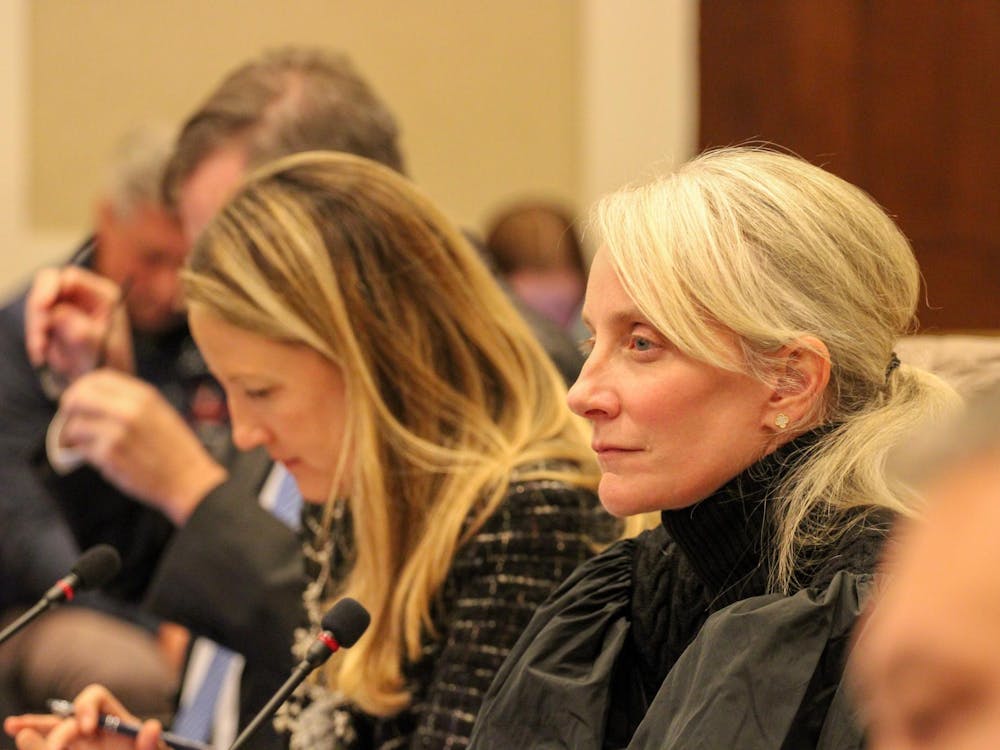A recent study by The Carnegie Foundation for the Advancement of Teaching suggested a need for a shift in undergraduate engineering education from predominantly theory-focused programs to a more practical, realistic format with a focus on professionalism.
Sheri Sheppard, professor of mechanical engineering at Stanford University and a consulting scholar at the Foundation, said she and her colleagues studied 40 undergraduate engineering programs, mainly focusing on self-assessment documents from the Accreditation Board for Engineering and Technology to see how the schools presented their own programs. Of these 40 schools, Sheppard said, the researchers chose seven schools to study more thoroughly through campus visits.
“We spent two to three days on each of those campuses, trying to get a deeper feeling about what ... their priorities were,” she explained.
Though Sheppard said each school had unique elements, she added that “there are some really dominant blocks that you find in each of the programs.”
For the purposes of the Foundation’s study, Sheppard said a “block” is both a body of teaching material and literally a block that prevents young engineers from being taught most effectively.
“The problem with forming programs around blocks is it’s harder to create connections,” Sheppard said. “In real engineering, you draw broadly from a set of tools and strategies. Blocks may be convenient for organizing a program, but [they keep] students from having authentic experiences.”
In addition, Sheppard said she and her colleagues found the study of professionalism and ethics was a smaller portion of many programs than she and her colleagues would have liked.
“We’re overjoyed that it’s on everyone’s radar, but it’s often there in a very small way,” she said. “One of the things we’re calling for is making professionalism the guide of programs.”
Sheppard said the researchers are recommending an “integrated network model” with professionalism forming the backbone of the model and they want the study of engineering to focus more on the actions and attitudes of practical engineering.
She added that students should be “confronted with the messiness of real work.”
University Engineering Dean James Aylor said he agrees with the idea that an increased focus on professionalism is needed in engineering education.
“You are developing products and services that are intended to improve the lifestyle of individuals,” he said. “You’ve got to be a professional and you’ve got to worry about the ethics side of engineering. There’s no question that that has to be a main component of the education process.”
Aylor said the University’s Engineering School focuses on teaching students about ethics and the real world of engineers.
“I don’t think we’re particularly unusual about students coming into engineering and not really knowing what it’s about,” he said. “They’re good at math and science, and someone told them along the way that an engineering degree is useful.”
Aylor said all Engineering students must take a few courses that focus on helping them to understand the value of engineering and what different types of work engineers actually do.
First-year students take a project-oriented ENGR 162, “Introduction to Engineering” course, he said, to move beyond the theoretical and “get excited about engineering.” Students also take STS 101, “Engineering, Technology and Society,” with the goal of learning about engineering in the context of the real world.
In the STS class, Aylor said, students get a chance to interview a faculty member and to give a presentation about what he or she does and why he or she is an engineer.
“We try hard to make sure [students] understand what engineering is about,” he said.
Another concern in the field of engineering, Sheppard said, is keeping students interested in the field.
“More people are going to college,” she said, “but the percentage of engineering [students] is declining.”
Sheppard said the number of women and minority students studying engineering is also low.
“There’s evidence that when you bring a diverse team together, the number of ideas and space of exploration is larger,” she said. “We need those groups because we need their broader thinking or their different thinking. The field as a whole is disadvantaged by a lack of diverse people.”
Aylor said the University is fortunate in that women make up 30 percent of undergraduate Engineering students; however, he also said a lack of female engineering students is a widespread problem.
“Across the country only about 18 percent of the undergraduate population [of engineering students] is female,” he said.
Aylor said one reason for the higher-than-average female population of the University’s Engineering School might be the fact that the University is a major liberal arts institution.
“It gives students the opportunity to take courses in other areas,” he said.
As for the minority student population of the Engineering School, Aylor said there is room for improvement.
“We are trying to attract some of the best and brightest in minorities, but it can be hard,” he said. “You just have to capture the people wanting to be engineers.”






